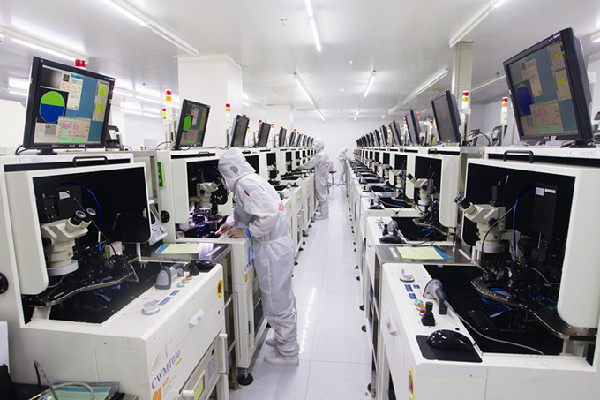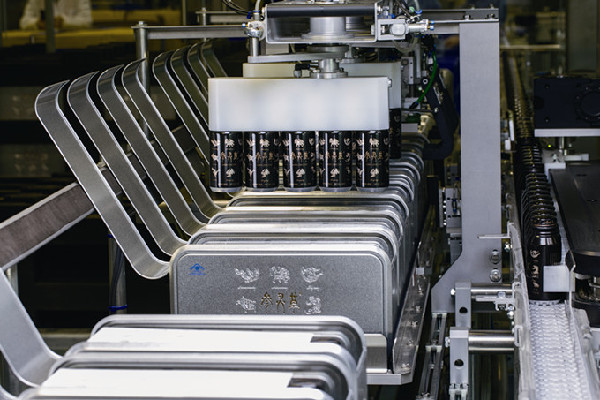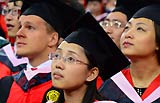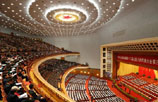Province promotes industry clusters to lure funds
By Song Mengxing (China Daily) Updated: 2015-05-27 14:38
 |
|
Lattice Power Co in Nanchang is a global leader in GaN-on-Silicon LED lighting. [Photos provided to China Daily] |
 |
|
Products are packaged on a cutting-edge line at Jiangzhong Pharmaceuticals, in Jiangxi province. [Photos provided to China Daily] |
East China’s Jiangxi province plans to use appealing development strategies and new industrial clusters to attract investment from Hong Kong, local authorities said prior to a business and trade fair in the special administrative region from Wednesday through Friday.
The implementation of the Belt and Road Initiative at the local level is among the province’s latest offers to investors from Hong Kong and other regions worldwide. The initiative consisting of the New Silk Road Economic Belt and 21st Century Maritime Silk Road was proposed by President Xi Jinping in 2013 as transport infrastructure projects linking Asia and Europe.
Qiang Wei, Party chief of Jiangxi, said the province is formulating attractive opening-up policies to implement the initiative and will make opening-up a key impetus for its development.
The Jiangxi provincial government approved its own implementation plan for the Belt and Road Initiative in early May.
Measures include improving the province’s infrastructure and promoting foreign trade as well as cultural and education exchanges.
The province will speed up construction of major railway projects to link to ports in neighboring coastal provinces such as Fujian and connect to overland railways to Central Asia and Europe.
Jiangxi will also accelerate construction of airports to facilitate air-land-sea trans-modal shipment.
The Jiangxi government aims to use the Belt and Road Initiative to promote its foreign trade and expand its overseas markets.
Competitive industries
The province plans to make some of its competitive industries internationally influential to promote trade and investment cooperation with other countries and regions involved in the Belt and Road Initiative.
Such industries include sectors related to porcelain, copper, tungsten, rare earth, natural food, tourism and automobiles.
Officials said the province will keep its export advantage in agriculture and labor-intensive industries, increase exports of mechanical, electronic and high-tech products.
It will build industrial parks in Jiangxi in collaboration with developed countries and regions and support major local companies such as Jiangxi Copper Corp to expand overseas through building manufacturing facilities and industrial parks abroad.
The province also encourages businesses to build marketing networks and after-sales systems overseas and develop cross-border e-commerce.
The Jiangxi provincial government plans to use both the World Low-Carbon and Eco-Economy Conference and Technical Exposition and the China Jingdezhen International Ceramics Fair in the province to promote trade cooperation with overseas regions.
It will also strengthen cooperation and exchanges in culture, ecology, science and technology, education and healthcare with other countries and regions.
Historically, Jiangxi was an important supplier of porcelain, tea, silk and ramie cloth along the ancient Silk Road and the province plans to appeal to regions involved in the Belt and Road Initiative by upgrading its industries.
Industrial development
The province plans to support the development of 60 industrial clusters. In 2014, the total business revenue of the 11,866 companies in the clusters reached 900 billion yuan ($145.17 billion).
Among these clusters, the automobile industry is the sector with the most rapid growth and huge market potential.
For instance, the Xiaolan Economic and Technological Development Zone in Nanchang, the capital of Jiangxi, is home to six production lines belonging to local Jiangling Motors Co. The lines have had an annual production capacity of 300,000 vehicles since June 2013, when the last became operational.
Driven by the huge demand from Jiangling, 129 auto parts plants have been established in the zone by companies including French parts manufacturer Faurecia.
The combined revenue of the automobile and auto parts industries last year accounted for 31 percent of the total in the zone.
The Jiangxi government also plans to boost the logistics industry.
“Though Jiangxi has many logistics companies, there is a lack of leading ones,” said Li Qinghua, deputy head of the Jiangxi commerce department, in late April.
The province will from this year help small and medium-sized logistics companies merge and encourage them to cooperate with globally renowned companies, she said.
Jiangxi has 16 logistics industry parks with combined revenue of more than 35.2 billion yuan in 2014, a year-on-year increase of 22.9 percent.
The province has made remarkable achievements in trade and investment in recent years.
Its imports and exports amounted to about $42.8 billion last year, up 16.4 percent from a year earlier. It attracted $8.41 billion worth of overseas investment in 2014, an increase of 11.9 percent year-on-year.
Hong Kong is one of Jiangxi’s largest trade partners and trade between the two was $5.42 billion in 2014, an increase of 48.6 percent from the previous year.
Further cooperation with Hong Kong, an international center of finance, trade and shipping, is significant for Jiangxi to boost its development, according to local media reports.
- Beijing-Tianjin-Hebei rolls out measures to tackle air pollution
- Prosecutors act to curb child abuse
- Shanghai mulls policies for more talent
- Construction on Nansha Islands 'befits China's intl obligations'
- Safety watchdog sends team to probe fatal fire in nursing home
- 175 grave robbers arrested in biggest-ever tomb raid
- China has no overseas military bases: Spokesperson
- Hero pilots died avoiding built-up area
- Canada to seize assets and extradite fugitives: Envoy
- At least 38 killed in nursing home fire in C China






